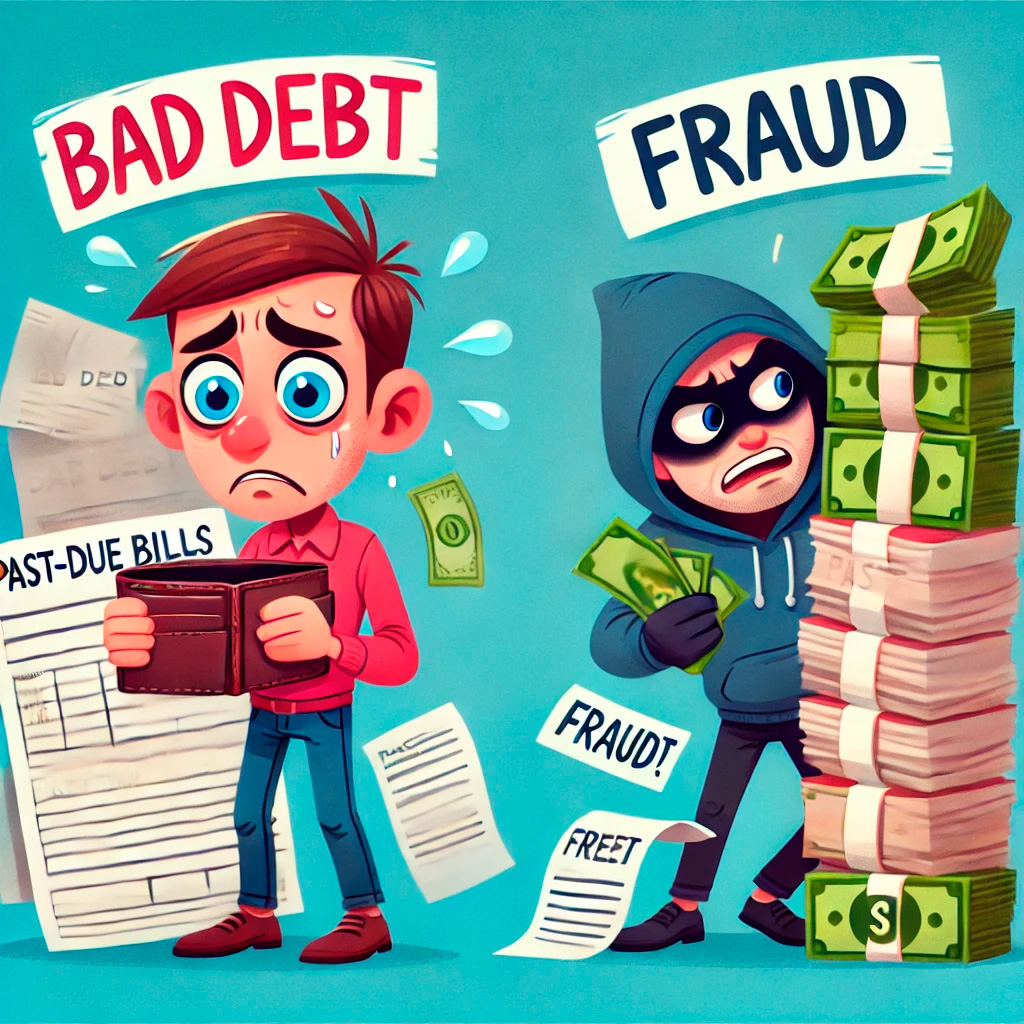
Understanding Bad Debt and Fraud
Fraud is when someone deliberately deceives you for financial gain. It’s like someone using a fake ID to get into an exclusive club, but the club is your business, and instead of a good time, they’re after your money. 🎭💰
Bad Debt
Types of Bad Debt
- Write-off: When you give up on collecting the debt entirely.
- Doubtful accounts: When you’re not sure if you’ll collect, but there’s still hope.
👆 Fun fact: Companies often use the “Allowance for Doubtful Accounts” to estimate bad debts before they happen.
How Businesses Handle Bad Debt
- Direct write-off method: Record the loss when you’re sure the debt won’t be paid.
- Allowance method: Estimate and record potential bad debts in advance.
Example
Let’s say your company had $100,000 in credit sales last year, and historically, 2% of credit sales become bad debts.
Allowance for Doubtful Accounts = $100,000 × 2% = $2,000
This $2,000 would be recorded as an expense, even before any specific debts go bad.
Why Bad Debt Matters
- It affects your bottom line.
- It impacts cash flow.
- It can indicate problems with your credit policies.
Fraud
Types of Fraud
- Asset misappropriation: Stealing or misusing company resources.
- Financial statement fraud: Manipulating financial reports.
- Corruption: Bribery, conflicts of interest, etc.
Preventing Fraud
- Internal controls: Implement checks and balances in your processes.
- Regular audits: Think of it as a financial health check-up.
- Employee education: Knowledge is power against fraudsters.
- Technology: Use software to detect unusual patterns.
Example
Imagine you run a retail store. You notice that cash register receipts don’t match inventory changes. After investigation, you find an employee has been “skimming” by pocketing cash and not recording sales. That’s fraud, my friend!
Why Fraud Matters
- It can cause significant financial losses.
- It can damage your company’s reputation.
- It can lead to legal issues.
The Connection Between Bad Debt and Fraud
Bad debt and fraud often cross paths. Sometimes, what looks like bad debt might actually be fraud. For example, a customer might use false information to obtain credit with no intention of paying.
Protecting Against Both
- Strong credit policies: Reduce bad debt risk.
- Robust verification processes: Prevent fraud.
- Regular monitoring: Catch issues early.
- Culture of integrity: Discourage internal fraud.

Leave a Reply